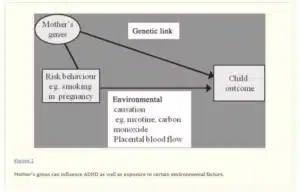This article is about An update on the appropriate role for hyperbaric oxygen: Indications and Evidence. Hyperbaric oxygen therapy (HBOT) is a medical treatment that involves breathing pure oxygen in a pressurized chamber. Over the years, it has been explored for a wide range of medical indications, and ongoing research continues to shed light on its potential uses and effectiveness. This update aims to provide insights into the appropriate role of HBOT by summarizing current indications and supporting evidence for its use in various medical conditions.
Background: Among advanced therapeutic interventions for wounds, hyperbaric oxygen therapy (HBOT) has the unique ability to ameliorate tissue hypoxia, reduce pathologic inflammation, and mitigate ischemia reperfusion injury. Most of the conditions for which it is utilized have few successful alternative treatments, and the morbidity and mortality associated with treatment failure are significant. Data on the efficacy and effectiveness of HBOT were reviewed, comparative effectiveness research of HBOT was explained, and a new paradigm for the appropriate use of HBOT was described.
Methods: Systematic reviews and randomized controlled trials that have evaluated HBOT were reviewed.
Results: Although numerous small randomized controlled trials provide compelling support for HBOT, the physics of the hyperbaric environment create significant barriers to trial design. The electronic health record infrastructure created to satisfy mandatory quality and registry reporting requirements as part of healthcare reform can be harnessed to facilitate the acquisition of real world data for HBOT comparative effectiveness studies and clinical decision support.
FAQs
Q1: What is hyperbaric oxygen therapy (HBOT), and how does it work?
1: HBOT is a medical treatment in which individuals breathe high concentration oxygen in a pressurized chamber, allowing the body to absorb more oxygen. This increased oxygen delivery to tissues can promote various therapeutic effects.
Q2: What are some common medical indications for HBOT?
A2: HBOT is commonly used for conditions such as decompression sickness (the bends), carbon monoxide poisoning, non-healing wounds (e.g., diabetic ulcers), and radiation injury. However, it has also been explored for numerous other conditions.
Q3: How is the appropriate role of HBOT determined, and what is the significance of evidence in its usage?
A3: The appropriate role of HBOT is determined through clinical research and evidence-based medicine. The significance of evidence lies in demonstrating the therapy’s safety and effectiveness in specific medical conditions, helping healthcare professionals make informed decisions.
Q4: Are there ongoing studies or emerging indications for HBOT that we should be aware of?
A4: Yes, ongoing research explores the potential applications of HBOT in areas like traumatic brain injury, autism, stroke, and more. The field of hyperbaric medicine is continuously evolving as new evidence emerges.
Conclusions
Predictive models can identify patients unlikely to heal spontaneously and most likely to benefit from HBOT. Although electronic health records can automate the calculation of predictive models making them available at the point of care, using them in clinical decision making is complicated. It is not clear whether stakeholders will support the allocation of healthcare resources using mathematical models, but the current patient selection process mandates a 30-day delay for all patients who might benefit and allows treatment for at least some patients who cannot benefit.




